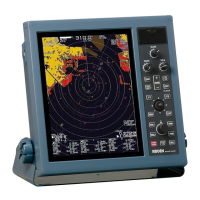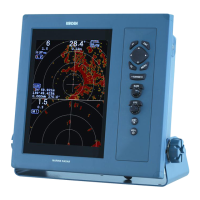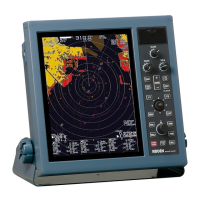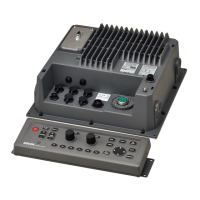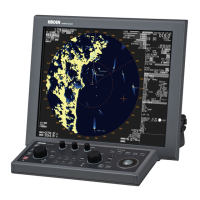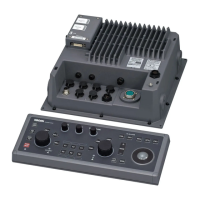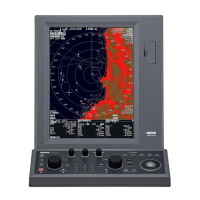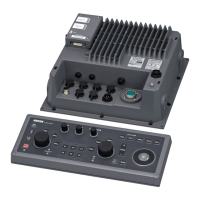What causes 'No video signal' on Koden MDC-2540?
- EEileen ClarkAug 31, 2025
A 'No video signal' error on your Koden Marine Radar may be caused by a front-end malfunction or IF Amp malfunction. Check and repair the front-end circuit and IF amplifier.

What causes 'No video signal' on Koden MDC-2540?
A 'No video signal' error on your Koden Marine Radar may be caused by a front-end malfunction or IF Amp malfunction. Check and repair the front-end circuit and IF amplifier.
How to resolve 'Antenna not connected' error on Koden MDC-2540?
If you receive an 'Antenna not connected' error on your Koden Marine Radar, check the antenna connecting cable and reconnect if necessary, because the antenna connecting cable may be disconnected.
What to do if there is neither heading nor latitude/longitude input on Koden MDC-2540?
If you attempt to set a mark without heading and latitude/longitude input on your Koden Marine Radar, provide both heading and latitude/longitude before setting a mark.
What if there is neither heading nor speed input on Koden MDC-2540?
If you attempt to acquire ATA without heading and speed input on your Koden Marine Radar, ensure both heading and speed inputs are available when acquiring ATA.
Why does Koden MDC-2540 Marine Radar display 'No own ship information'?
The 'No own ship information' message on your Koden Marine Radar appears because heading, speed, and latitude/longitude signal cannot be input during chart display. Ensure that heading, speed, and position data are correctly input.
What to do if Koden MDC-2540 Marine Radar shows 'No signal on Speed'?
If your Koden Marine Radar indicates 'No signal on Speed', ensure VHV, VHW, VBW, VTG, RMC, or RMA signals are being received.
How to fix 'No signal on Heading' on Koden MDC-2540?
If you are getting a 'No signal on Heading' message on your Koden Marine Radar, confirm the reception of HDT, HDG, HDM, VTG, RMC, or RMA signals.
What happens if there is no speed input on Koden MDC-2540?
If you attempt to acquire ATA without speed input on your Koden Marine Radar, ensure you input speed to acquire ATA.
What to do if there is no heading input on Koden MDC-2540?
If you are experiencing a lack of heading input on your Koden Marine Radar, and you've attempted to select a display mode other than H-UP, ensure that a heading input is available before changing the display mode.
| Power Output | 4 kW |
|---|---|
| Frequency | 9410 ± 30 MHz |
| Antenna Length | 4 feet |
| Rotation Speed | 24/48 rpm |
| Display Size | 10.4 inches |
| Beam Width | 1.8° Horizontal |
| Display | LCD |
| Power Supply | 12-24 VDC |
Explains the purpose and structure of the operation manual.
Provides essential safety precautions and warnings for operating the radar system.
Details procedures for safely disposing of the device's lithium ion cell and the unit.
Highlights key functionalities and technical specifications of the radar system.
Describes how to handle missing navigation signals and configure alarm settings.
Explains the layout and elements displayed on the radar screen.
Details the layout and function of the physical buttons and knobs on the control panel.
Instructs on how to safely power the radar system on and off.
Guides on adjusting the brightness of the display unit and control panel.
Explains how to start and stop radar transmission.
Describes how to adjust the radar's viewing range for observation.
Details how to adjust the receiver gain for optimal target detection.
Explains how to use the Sea Clutter (STC) function to reduce unwanted echoes.
Details how to use the Rain/Snow Clutter (FTC) function to improve image clarity.
Explains how to change the transmission pulse length for target detection.
Describes how to use the Enhance Target function to improve visibility of desired targets.
Guides on using VRM and EBL to measure target distance and bearing.
Explains how to switch between day and night echo color schemes for better viewing.
Details how to adjust the ship's position on the screen for a broader view.
Explains how to select different display modes for optimal viewing.
Describes how to use Automatic Tracking Aids (ATA) and Electronic Plotting Aids (EPA).
Explains how to navigate and operate the device's menu system.
Details the various settings and options available within the MARKER menu.
Covers the settings related to radar echo display and processing.
Outlines the navigation-related settings and functions.
Describes how to set up and manage alarm functions for safety.
Details the settings for ATA/EPA functions, including target acquisition and deletion.
Explains the settings for the Automatic Identification System (AIS) display.
Details the functions and settings for chart display and management.
Describes initial setup options and settings for the radar system.
Details input/output settings for navigation data exchange.
Provides functions for diagnosing the device's operational status.
Details the specifications of the different antenna types used.
Lists the specifications for the radar display unit.
Lists standard configuration items and available options for the system.
Provides physical dimensions and weight details for the device.
Explains the basic principles of how a radar system operates.
Discusses characteristics of radar radio waves and target reflection.
Explains radar interference and the device's rejection capabilities.
